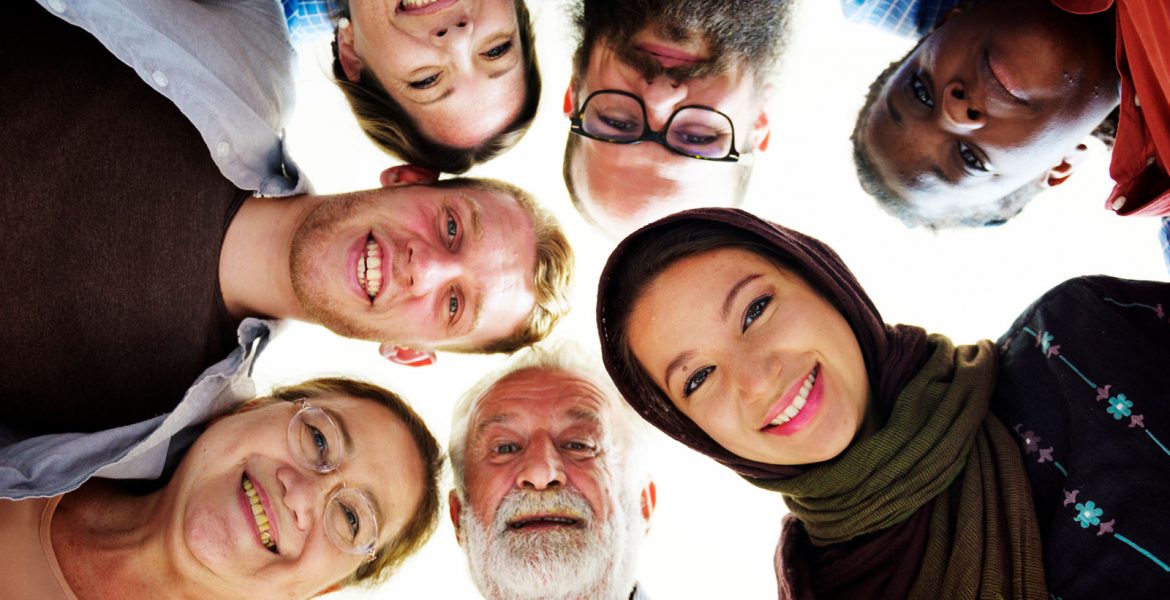Early on in my career in advertising I remember when we cast a Korean punk rocker, a black female South African film-maker and an interracial gay couple for a European denim campaign. In some cities, rocks were thrown through storefront windows. Our client stood fast, repaired the windows, but did not pull the campaign.
A few years later I travelled across Europe, North and South America researching a global campaign that starred an all-black cast for a booze brand. It was rejected by respondents because the cast weren’t considered relatable or aspirational. It never ran.
Fast forward to 2018 and we’ve just launched a campaign for River Island #labelsareforclothes, banishing labels to clothes, not people. The campaign positively celebrates people who have in the past been unfairly labelled: gender fluid Asianna, body confidence activist Sabina, gay couple Charlie and Bella, 56-year-old Steven, British Hijabi Zara and transgender model Stav.
#labelsareforclothes has earned millions of impressions and been positively received but has not been without its naysayers. Comments on social media like ‘where’s the white guy and sexy girls’ or ‘you’re either a girl or a guy, period’ haven’t been infrequent. River Island believes the discussion is a good and healthy one and as their agency we concur.
But as advertisers and marketers we say we want to change behaviour, create cultural conversation and enter the public consciousness, yet all too often we fall short, either through fear, laziness, lack of ambition, or a combination of all three.
There’s no doubt that advertising which features white, straight, thin, middle-class people doesn’t get rocks thrown at it, is easier to get through research and doesn’t create social debate. But as advertisers and marketers we say we want to change behaviour, create cultural conversation and enter the public consciousness, yet all too often we fall short, either through fear, laziness, lack of ambition, or a combination of all three.
Right now, it seems like the cultural forces are coalescing, creating a perfect storm for us to celebrate and normalise diversity and individuality. #metoo and #timesup has been the biggest blockbuster out of Hollywood this year and at the same time the need for change in the film industry has never been starker. At this year’s Golden Globes Natalie Portman infamously announced the ‘all-male nominees’ in the best director category, while no black director was nominated or has ever won the award.
In the UK we’ve marked the 100th anniversary of women getting the right to vote and celebrated an illustrious list of suffragettes, yet historians and the media seem reluctant to mention that Emmeline Pankhurst was bisexual and in later life partnered lesbian composer and fellow suffragette Dame Ethel Smyth.
February was LGBTQ history month, yet I don’t remember either of my children ever doing anything at school related to LGBTQ history, do you?
The need for us as an industry to shine a spotlight on those outside of the traditional white, straight, middle-class paradigm is clear. GLAAD’s annual survey of acceptance and attitudes towards LGBTQ people in America underlines the necessity. For the 1st time since the survey began, the acceptance of the LGBTQ community has declined. The survey conducted by The Harris Poll also shows a 9% rise in LGBTQ people reporting discrimination because of their sexual orientation and gender identity. The conclusion of the report is that ‘LGBTQ people need to be more visible and vocal in order to stop the rollback in acceptance.’
Couples can be of the same gender. Trans men or women can be beauty icons. Muslims can represent Britishness. Old can be cool. Gender can be irrelevant. Curves can be shown-off. Relationships can be interracial. Someone being themselves can be as aspirational as someone who is like everyone else.
Usher in the marketing and agency community. The brief is clear. Stop defaulting to the white, straight, thin, middle-class stereotype. Couples can be of the same gender. Trans men or women can be beauty icons. Muslims can represent Britishness. Old can be cool. Gender can be irrelevant. Curves can be shown-off. Relationships can be interracial. Someone being themselves can be as aspirational as someone who is like everyone else.
We are celebrated as an industry because of the stories we tell. Those stories should transcend cultures, transcend race, religion, sexuality, age, size and gender identity. The stories we tell should not just showcase the stereotypical hero but should celebrate those that have been unfairly labelled in the past and even now.
Together as a community we have come to the conclusion that ad land needs to be more diverse and the days of people in our industry being harassed, bullied and belittled need to end and we all bear a personal and professional responsibility to make that happen. Together we need to herald a new dawn, when boardrooms are filled with the best – not one gender, or one colour or one class.
But just as importantly we need to reflect and celebrate diversity in our work, publicly and on a mass scale, celebrating those that have been harassed, bullied, belittled and labelled. Together we need to usher in a new day when advertising doesn’t entrench stereotypes and labels, but gets rid of them, by being visible and vocal – something every brand aspires to.

